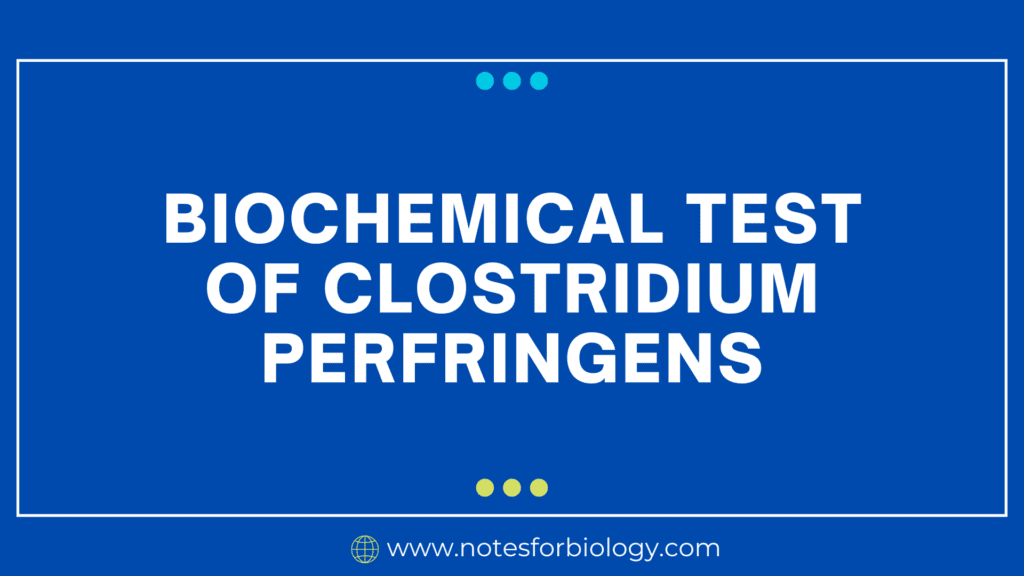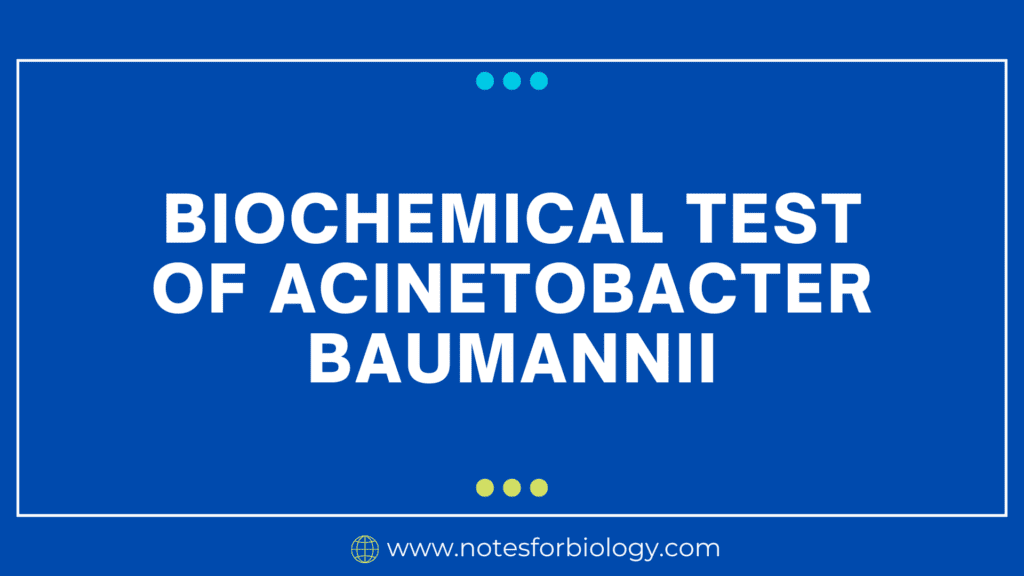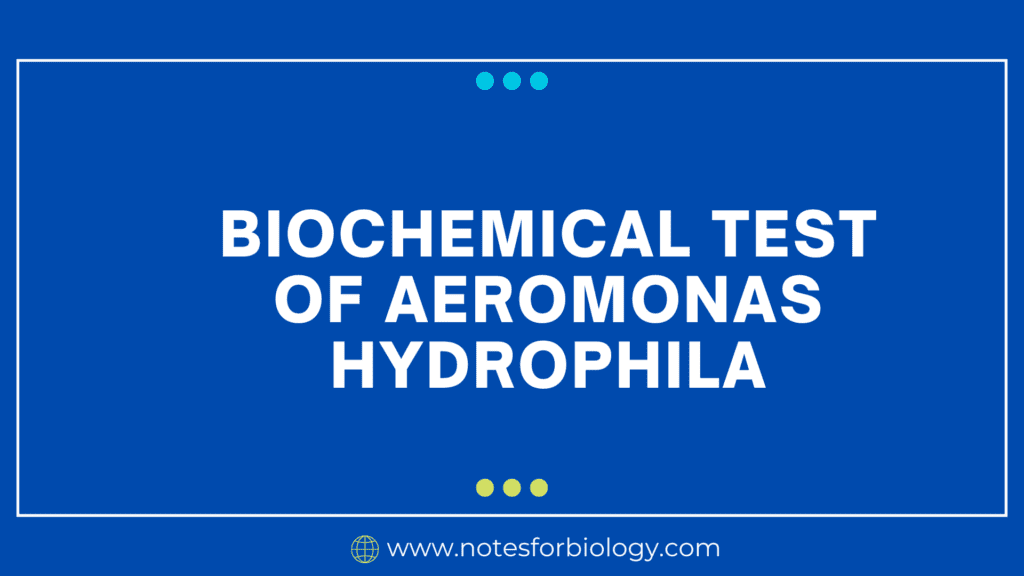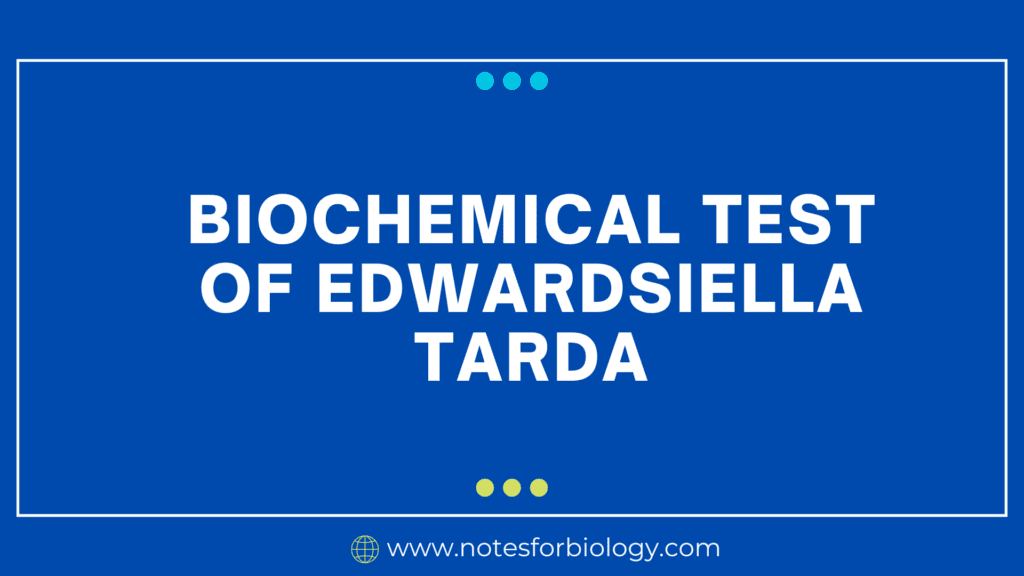Clostridium perfringens can be distinguished by a number of crucial tests. It manifests as big, oxygen-free growing gram-positive rods. In blood agar, it forms two distinct areas surrounding its colonies. When it ferments carbohydrates like glucose, lactose, and sucrose, it breaks down egg yolks and gelatin and releases gas. It also produces nitrite from nitrate. It induces a foamy reaction in milk and breaks down the meat in a particular kind of meat broth. These assays aid in verifying Clostridium perfringens’ existence.
Table of Contents
Definition
Gram-positive Clostridium perfringens is an oxygen-free spore-forming bacteria. It can result in food poisoning and gas gangrene because to its production of toxins. It is frequently found in soil and the intestines of humans and animals.
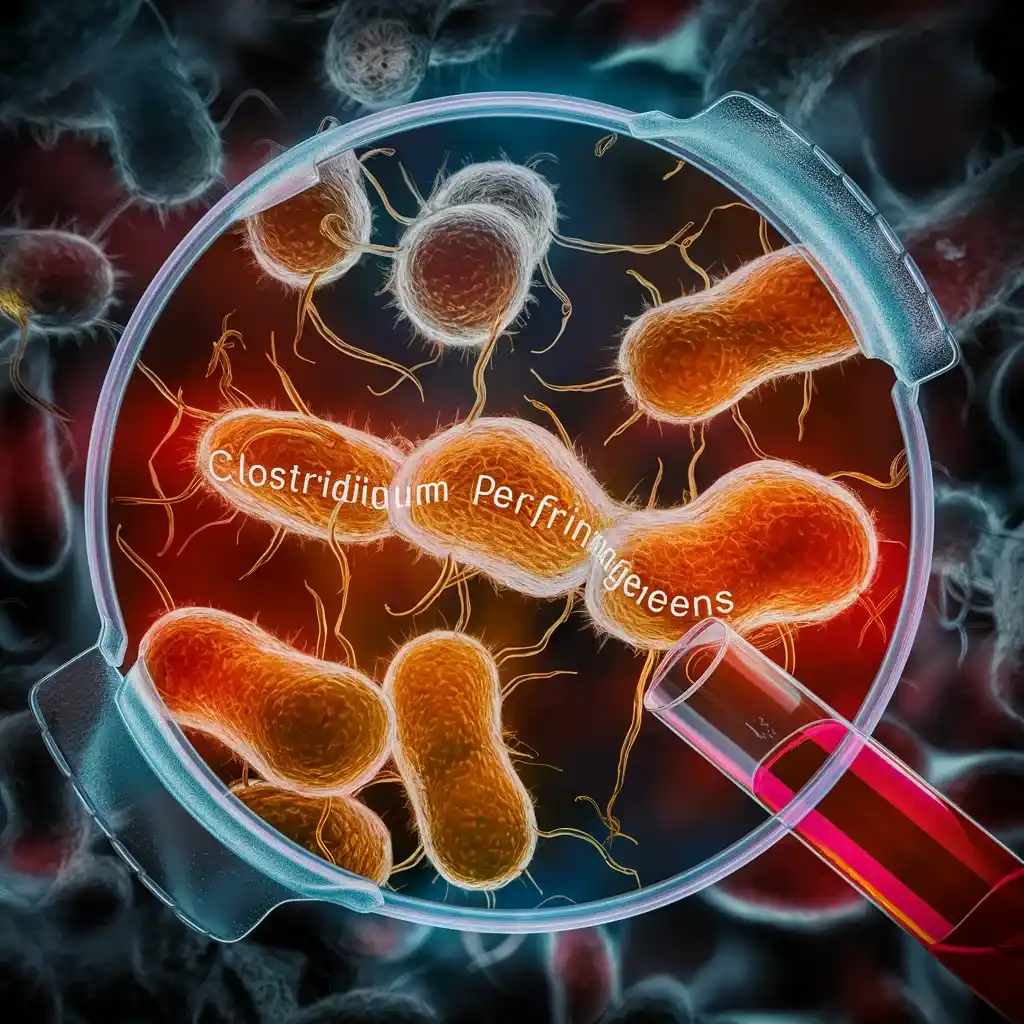
Here is an overview of the biochemical tests used to identify Clostridium perfringens and some characteristic results:
1. Gram Stain
Under a microscope, Clostridium perfringens is visible as big, gram-positive rods after a Gram stain. Because of their thick peptidoglycan cell wall, the cells stain purple. They frequently show up in chains and occasionally display subterminal spores, or spores that are found close to the cell’s end. Thanks to its size, shape, and staining abilities, the Gram stain makes it easier to distinguish Clostridium perfringens from other bacteria.
2. Spore Stain
Spore staining of Clostridium perfringens reveals subterminal spores, which are found close to the ends of the bacterial cells. These spores, which show up as distinct, oval, unstained, or lightly stained areas within the vegetative cells, are highlighted by the spore stain technique. This feature is critical for recognizing and distinguishing C. perfringens from other bacteria that either have different spore locations or do not form spores at all.
3. Anaerobic Growth
Anaerobic growth is a feature of Clostridium perfringens, which means it grows well in oxygen-free environments. When cultivated, it grows best in anaerobic environments and very little to none at all in oxygenated ones. With the aid of this trait, C. perfringens can be distinguished from other bacteria that grow better in the presence of oxygen. Its cultivation and precise identification in laboratory settings require anaerobic conditions.
4. Lecithinase Production (Nagler’s Reaction)
Lecithinase is the enzyme that breaks down lecithin and is produced by Clostridium perfringens. When a bacterium produces an opaque, hazy halo around its colonies, it can be seen doing the Nagler’s reaction on egg yolk agar. The ability of this reaction to produce lecithinase helps to distinguish Clostridium perfringens from other species of bacteria, which is important for identification.
5. Double Zone of Hemolysis on Blood Agar
In blood agar cultures, Clostridium perfringens usually displays a characteristic double zone of hemolysis. Red blood cells are lysed completely in the inner zone of complete hemolysis, which surrounds a wider zone of partial hemolysis, which lyses them partially. This phenomenon is caused by the formation of two distinct zones around bacterial colonies. When identifying C. perfringens in a laboratory setting, its distinctive double zone pattern is used as a critical diagnostic tool to set it apart from other bacteria.
6. Nagler Reaction
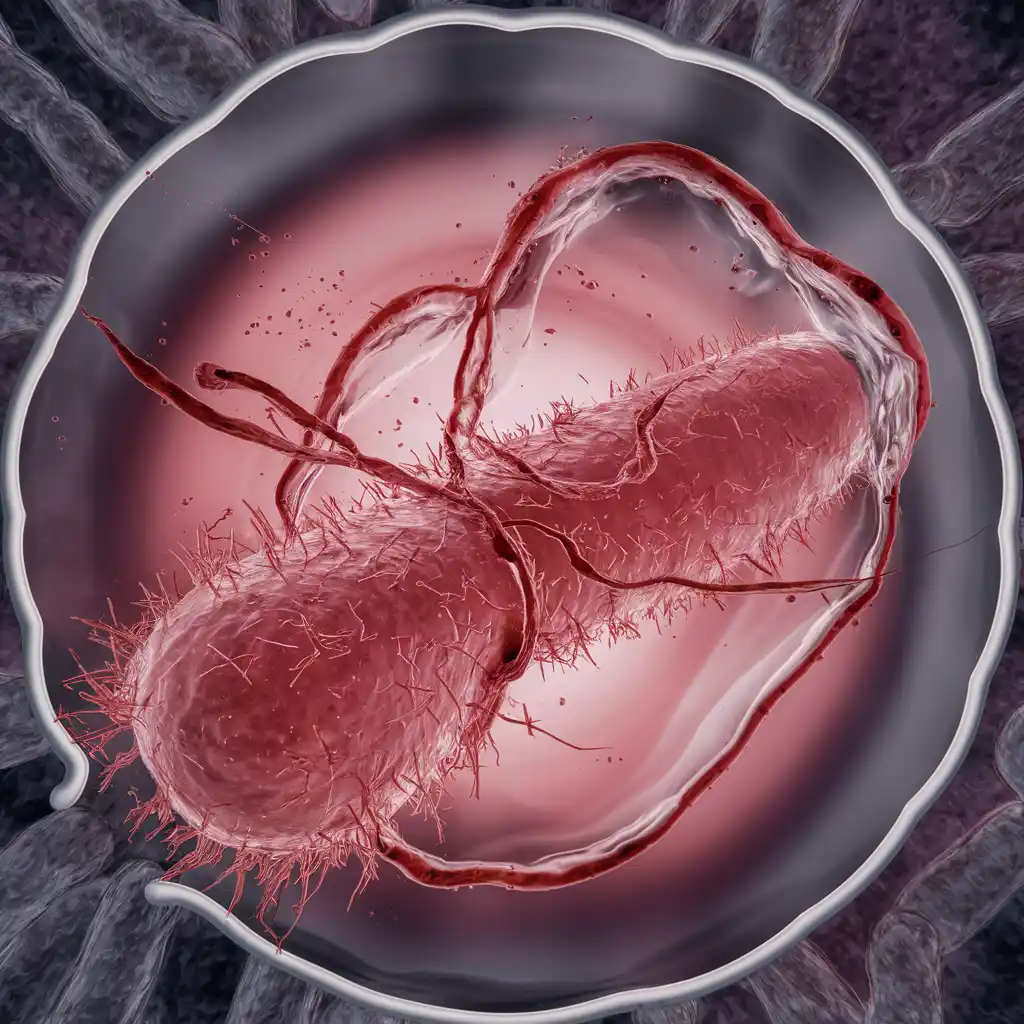
The Nagler reaction is a test for the presence of Clostridium perfringens’ alpha-toxin. An antitoxin that is particular to the alpha-toxin is added to C. perfringens that has been cultured on egg yolk agar in this reaction. The egg yolk’s lecithin will be hydrolyzed by the bacterium if it generates alpha-toxin, which will cause a precipitate to be seen around the colonies. This reaction helps distinguish C. perfringens from other bacteria by confirming that it produces alpha-toxin.
7. Gelatin Hydrolysis
Gelatin hydrolysis is a biochemical trait that Clostridium perfringens possesses that is utilized for identification. C. perfringens produces gelatinase, an enzyme that breaks down gelatin, when it is cultured on media containing gelatin. The gelatin medium encircling the bacterial growth liquefies as a result of this enzymatic activity. One characteristic that sets C. perfringens apart from other bacteria that might not have this ability is the positive gelatin hydrolysis test.
8. Fermentation of Carbohydrates
A component of Clostridium perfringens’ metabolic process is the fermentation of different carbohydrates, including glucose, lactose, and sucrose. Specialized media can detect the byproducts of this fermentation, which include gases and acids. C. perfringens usually has positive results, indicating the production of acid and gas, when cultured in carbohydrate broths with a Durham tube to record gas production. One essential biochemical feature that is utilized to distinguish C. perfringens in laboratory settings is its capacity to ferment carbohydrates.
9. Nitrate Reduction
As part of its metabolic process, Clostridium perfringens is able to convert nitrate to nitrite. The C. perfringens strain is cultivated in a broth containing nitrate for the nitrate reduction test. Following incubation, a reagent is added to detect the presence of nitrite. The formation of a red color, which verifies nitrate reduction, indicates a favorable outcome. This biochemical feature helps distinguish C. perfringens from other bacteria that might not have this ability and aids in its identification.
10. Reverse CAMP Test
Clostridium perfringens is identified by the Reverse CAMP (cyclic adenosine monophosphate) test, which looks for the synthesis of a particular synergistic hemolysin. This test involves co-culturing a Group B Streptococcus strain on blood agar with C. perfringens. A distinctive zone of enhanced hemolysis, resembling an arrowhead, forms where Group B Streptococcus produces hemolysis when it comes into contact with C. perfringens if it produces the synergistic hemolysin. The presence of C. perfringens is confirmed by this unique pattern, which facilitates its identification in laboratory and clinical settings.
11. Stormy Fermentation in Litmus Milk
Clostridium perfringens displays a distinct reaction in the litmus milk Stormy Fermentation test that is characterized by coagulation, gas production, and acidity. Lactic acid and gas are produced when this bacteria ferments lactose in the litmus milk medium. The medium turns pink during this process, which causes coagulation and a lowering of pH, giving the appearance of curdled material. The intense and erratic reaction seen in the litmus milk, which helped identify C. perfringens in lab settings and set it apart from other bacteria, is referred to as “stormy fermentation.”
12. Gas Production in Cooked Meat Medium
In the Litmus Milk and Cooked Meat Medium tests, Clostridium perfringens exhibits unique behaviors. Meat is broken down and visible gas bubbles appear in Cooked Meat Medium because C. perfringens breaks down the meat. Stormy fermentation results in coagulation, the production of gas, and a drop in pH in Litmus Milk, which is indicated by a change in the medium’s color to pink. These responses act as markers for diagnosis, making it easier to identify C. perfringens in lab settings.
By using biochemical tests, Clostridium perfringens can be distinguished from other gram-positive rods and other Clostridium species. Due to the anaerobic nature of this bacterium, proper anaerobic techniques and media are essential for accurate identification.
What are the common biochemical tests used to identify Clostridium perfringens?
Several biochemical tests are commonly employed to identify Clostridium perfringens in laboratory settings. These include: Gram Stain, Spore Stain, Anaerobic Growth, Lecithinase Production (Nagler’s Reaction), Double Zone of Hemolysis on Blood Agar, Nagler Reaction, Gelatin Hydrolysis, Fermentation of Carbohydrates, Nitrate Reduction, Reverse CAMP Test, Stormy Fermentation in Litmus Milk, Gas Production in Cooked Meat Medium.
What is Clostridium perfringens most commonly found in?
The most common places to find Clostridium perfringens are in sewage, soil, and animal and human intestines. It may also be found in environmental sources like food, water, and dust.
Related Articles

